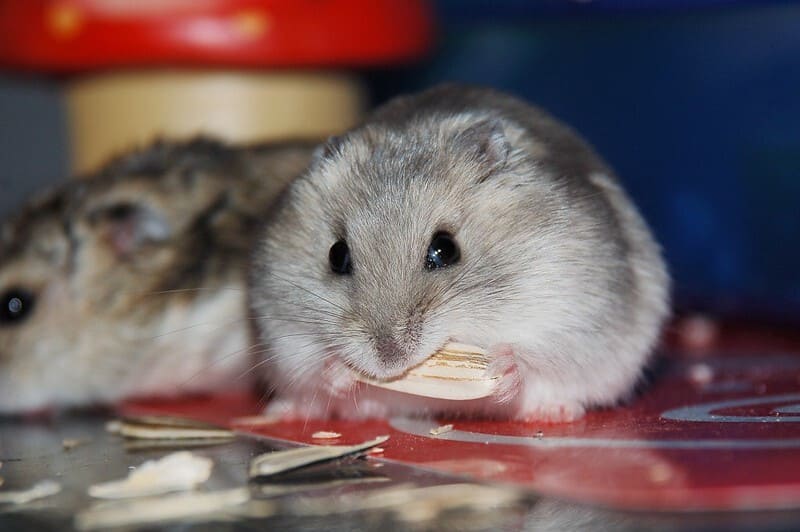Hamsters are among the most popular small pets, known for their adorable appearance and relatively low maintenance. However, a significant debate exists within the hamster-keeping community about whether hamsters should be kept individually or in pairs or groups. This question of socialization for hamsters has generated a fair amount of discussion, with both sides presenting valid arguments. In this comprehensive exploration, we will delve into the advantages and disadvantages of keeping hamsters in pairs or groups, as well as the impact on their well-being and happiness.

The Solitary Nature of Hamsters
Hamsters, particularly the most common Syrian (Golden) hamsters, are naturally solitary animals. In the wild, they lead a solitary life and fiercely defend their territory. In captivity, this solitary nature often carries over. Syrian hamsters, in particular, are territorial and may become aggressive if housed with other hamsters. This natural behavior has led many experts and hamster enthusiasts to advocate for keeping hamsters individually.
- Territorial Instincts: Hamsters, by nature, are territorial animals. In the wild, they establish and protect their own burrows, and this instinct persists in captivity. When housed with other hamsters, territorial disputes can arise, leading to stress, injuries, and even death.
- Aggression: Syrian hamsters, in particular, are known for their aggressive tendencies. They can exhibit aggressive behavior towards other hamsters, often leading to fights that can result in injuries or death. Even dwarf hamsters, which are more social than Syrians, can display aggression in group settings.
- Stress: Hamsters are sensitive animals, and the presence of another hamster in their enclosure can cause stress and anxiety. This stress can lead to various health issues, such as hair loss, over-grooming, and a weakened immune system.
- Incompatibility: Not all hamsters get along, even within the same species. Incompatible hamsters may constantly fight or stress each other out, making cohabitation impractical.
The Argument for Pair or Group Housing
On the other side of the debate are those who argue that hamsters can benefit from social interaction and should be kept in pairs or groups. While this approach is less common and more challenging to implement, it has its own set of advantages:
- Social Interaction: Some species of hamsters, such as dwarf hamsters (Roborovski, Campbell’s, and Winter White hamsters), are more sociable and less territorial. They can coexist peacefully in pairs or small groups, providing social interaction and companionship.
- Preventing Loneliness: Hamsters are often kept in cages or enclosures that restrict their natural instincts to explore and forage. In such cases, a companion can help alleviate loneliness and boredom.
- Observational Learning: When housed together, hamsters may learn from each other’s behavior. This can include learning where to find food, how to use exercise equipment, or even social grooming.
- Reduced Stress: In certain cases, hamsters that are introduced to each other at a young age and housed together can form strong bonds and have reduced stress levels compared to solitary hamsters.

Factors to Consider When Keeping Hamsters in Pairs or Groups
If you decide to keep hamsters in pairs or groups, several important factors must be taken into account to ensure their well-being and safety:
- Compatible Species: As mentioned earlier, not all hamster species are equally social. Dwarf hamsters are generally more amenable to living in pairs or small groups, while Syrian hamsters should almost always be kept individually.
- Same-Sex Pairs: To prevent unintended breeding, it’s crucial to house hamsters of the same sex together. Mixed-sex pairs or groups will inevitably lead to reproduction, which can be difficult to manage.
- Early Introduction: If you intend to house hamsters together, it’s best to introduce them at a young age. Hamsters that grow up together are more likely to form bonds and coexist peacefully.
- Adequate Space: Larger enclosures are essential when housing multiple hamsters. The more hamsters you have, the more space they need to avoid territorial conflicts.
- Supervision: Keep a close eye on your hamsters initially, especially if they are being introduced to each other for the first time. This allows you to intervene if any aggressive behavior arises.
- Separation Option: Be prepared to separate hamsters if conflicts become severe. It’s essential to have extra cages or enclosures on hand to prevent injuries.
Case Studies and Expert Opinions
While the debate over whether hamsters should be kept in pairs or individually continues, there are some case studies and expert opinions that shed light on this issue.
- The Roborovski Dwarf Hamster: Roborovski dwarf hamsters are known for their sociable nature. In a study published in the “Journal of Applied Animal Welfare Science,” it was found that Roborovski hamsters showed signs of increased activity and reduced aggression when housed in pairs. They exhibited more grooming and sleeping together, suggesting social bonding.
- Dr. Richard A. Saylor, DVM: Dr. Saylor, a respected veterinarian with experience in small pet care, suggests that while Syrian hamsters are best kept individually due to their territorial nature, some dwarf hamster species can be kept in pairs or small groups as long as they are introduced at a young age and provided with ample space.
- Mixed Experiences: Hamster owners often share their experiences online, and there are both success stories and cautionary tales regarding keeping hamsters in pairs or groups. Some owners have reported positive outcomes, while others have witnessed fights and injuries, emphasizing the importance of individual personalities and compatibility.

Ethical Considerations
The ethical aspect of keeping hamsters in pairs or groups is a significant part of this debate. The primary concern is the well-being and happiness of the animals. Here are some ethical considerations to keep in mind:
- Quality of Life: The foremost concern is the quality of life that hamsters experience. Are they happier and healthier when kept in pairs or groups, or do they thrive individually? The welfare of the animals should be a top priority.
- Freedom from Harm: Housing hamsters together should not result in harm, stress, or injuries. Ethical hamster keepers should intervene if conflicts arise and separate hamsters if necessary to prevent harm.
- Enrichment and Stimulation: Hamsters need mental and physical stimulation to live a fulfilling life. The housing arrangement, whether solitary or social, should cater to their need for exploration, play, and exercise.
- Responsible Breeding: If you decide to keep hamsters in pairs, you should take responsibility for preventing unwanted breeding. Ethical breeding practices ensure that hamster populations are controlled and that the offspring find suitable homes.
Balancing the Debate
The debate on whether hamsters should be kept in pairs or individually ultimately comes down to individual preferences, hamster species, and the ability to provide proper care. Balancing the debate involves considering the following factors:
- Species-Specific Needs: Recognize that different hamster species have different social needs. Syrian hamsters are primarily solitary, while dwarf hamsters are more social.
- Space and Resources: Assess your ability to provide adequate space, enrichment, and supervision if you choose to house hamsters together.
- Compatibility: Understand that not all hamsters are compatible with each other. Even if they belong to the same species, some hamsters may not get along.
- Ethical Responsibility: Always prioritize the welfare and well-being of your hamsters. Ensure they are free from harm, have access to enrichment, and are not subjected to unnecessary stress.
- Personal Observation: Pay attention to your hamsters’ behavior and adjust your approach accordingly. If they show signs of stress or aggression when housed together, it may be best to separate them.
- Consult with Experts: Seek advice from experienced hamster owners, veterinarians, and animal behaviorists to make informed decisions.
Conclusion
The question of whether hamsters should be kept in pairs or individually is not a one-size-fits-all issue. It depends on the species of hamster, the individual personalities of the hamsters, and the commitment of the owner to provide the necessary care and supervision.
While Syrian hamsters are typically best kept individually due to their territorial nature, some dwarf hamster species can thrive when housed in pairs or small groups. However, it’s essential to carefully consider the well-being and happiness of the animals and be prepared to intervene or separate them if conflicts arise.
Ultimately, whether you choose to keep hamsters in pairs or individually, responsible and ethical pet ownership is of paramount importance. Providing a safe, enriching, and loving environment for your hamsters should always be the primary focus.
